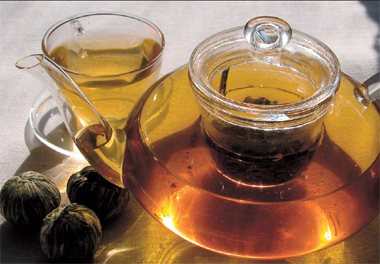Chinese tea with its long history and cultural importance comes in a phenomenal range of shapes, flavors and styles. There are green teas, black teas, flower teas and combinations of herbal infusions.
In 2008, 1.24 million tons of tea were produced in China, roughly one-third of the total around the world. Last year the industry was worth 32 billion yuan (US$4.68 billion).
But there is an increasing variety of styles of tea being produced in the world each with a flavor unique to its geography.
In Europe, which was introduced to tea first from China, the tea-drinking culture has flourished and modern trends feature new fruit teas and herbal combinations such as chamomile and cinnamon.
Upscale British tea brand Twinings is hoping to bring these new varieties to China.
|

|
|
Chinese tea with its long history and cultural importance comes in a phenomenal range of shapes, flavors and styles. [Shanghai Daily]
|
"The time is right to bring our teas to China," says Stephen Twining, public relations director of the company and 10th generation of the family business. "There is interest in choice and what the rest of the world can offer."
Having been born a member of one of the oldest tea-making families in Britain, Stephen drinks up to 15 cups of tea a day. He describes tea blending as a uniquely human art that is different every time depending on the weather and the conditions of the particular tea garden.
Different types of tea suit different times of the day - a strong English breakfast tea in the morning, followed by a lighter Earl Grey at lunch time and caffeine free herbal infusions in the evening. In British tea-drinking culture, tea is often paired with cakes - a stronger tea for chocolate cake, whereas Earl Grey suits fruitier cakes.
Chinese green teas have a light, refreshing flavor compared with Western blended black teas with stronger flavors that soak into the water faster.
According to Edward Bruno You, a tasting expert for a Chinese tea trading company and a freelance writer on Chinese food and tea, different types of tea had traditionally defined markets.